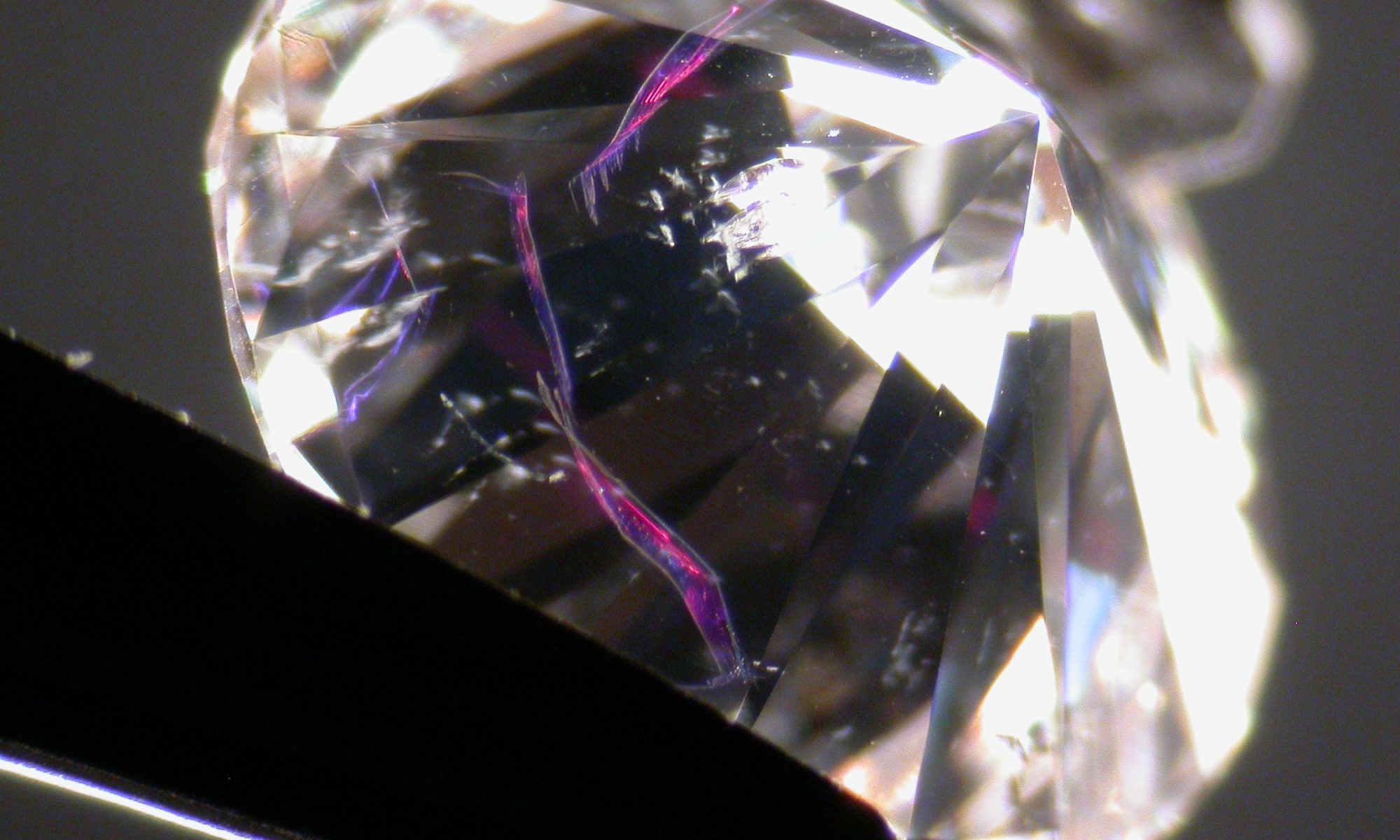Clarity enhancement in diamonds refers to the process of improving the appearance of a diamond by reducing the visibility of inclusions and blemishes. This is often done to diamonds with lower clarity grades to increase their marketability and value. However, it is important to note that clarity-enhanced diamonds can be priced differently from untreated diamonds, and the enhancement methods can affect their long-term durability and appearance.
Common Clarity Enhancement Techniques:
Laser Drilling
This process is used to remove dark inclusions, such as black carbon spots or feathers (small cracks), by creating a small hole through the diamond to the inclusion.
A laser beam is used to vaporize the inclusion, making it less visible.
Pros: This method can significantly improve the diamond’s clarity by removing visible inclusions.
Cons: The laser drilling process can leave a small tunnel or cavity in the diamond, which may affect its structural integrity and can be visible under magnification.
Fracture Filling (Laser-Enhanced or HPHT)
This method involves filling cracks or fractures (feathers) with a special glass-like substance or a material that is similar in appearance to the diamond itself.
The filler improves the clarity of the diamond by making the inclusion less noticeable.
Pros: It can improve the diamond’s appearance by making cracks and fractures blend with the diamond, especially for diamonds with I clarity grades.
Cons: Fracture-filled diamonds can be more prone to damage, as the filler material can be less durable than the diamond itself. It is also detectable by trained gemologists under magnification.
High Pressure High Temperature (HPHT) Treatment
This method is mainly used on diamonds with a brown or yellowish tint, but it can also be applied to enhance clarity.
It involves subjecting the diamond to extremely high pressure and temperature conditions, which can cause some inclusions (especially graining or carbon spots) to be less noticeable.
Pros: It is an effective way to reduce the appearance of certain inclusions and may improve the overall colour and clarity of the diamond.
Cons: HPHT treatment can cause certain inclusions to become more prominent over time, and the process is not always fully reversible.
Implications of Clarity Enhancement:
Impact on Value:
Clarity-enhanced diamonds are generally priced lower than untreated diamonds of the same carat weight, cut, and colour.
The enhancement can improve the diamond’s marketability, but it is important for buyers to understand that the treatment affects the diamond’s long-term value.
Disclosure and Transparency:
Ethical practices in the diamond industry require disclosure of any clarity enhancements, as these treatments can affect the diamond’s value and durability.
Gemological laboratories such as GIA and DCLA will include information on any clarity enhancements in the diamond’s grading report. It’s important for buyers to request this information when purchasing a diamond.
Durability:
Depending on the type of enhancement, the durability of the diamond may be impacted. For example, a fracture-filled diamond may be more susceptible to damage because the filling material is not as hard as the diamond.
It is recommended to be cautious when cleaning or setting clarity-enhanced diamonds, as the treatments can weaken the stone.
Resale and Investment Considerations:
Clarity-enhanced diamonds may not retain their value as well as untreated diamonds in the secondary market. Their resale value can be lower because of the treatments applied.
Should You Consider Clarity Enhancement?
Clarity-enhanced diamonds can be an affordable option for those looking to get a larger or more visually appealing diamond without the higher price tag of an untreated high-clarity stone.
However, it’s essential to weigh the potential downsides, including the risk of damage and reduced long-term value.

